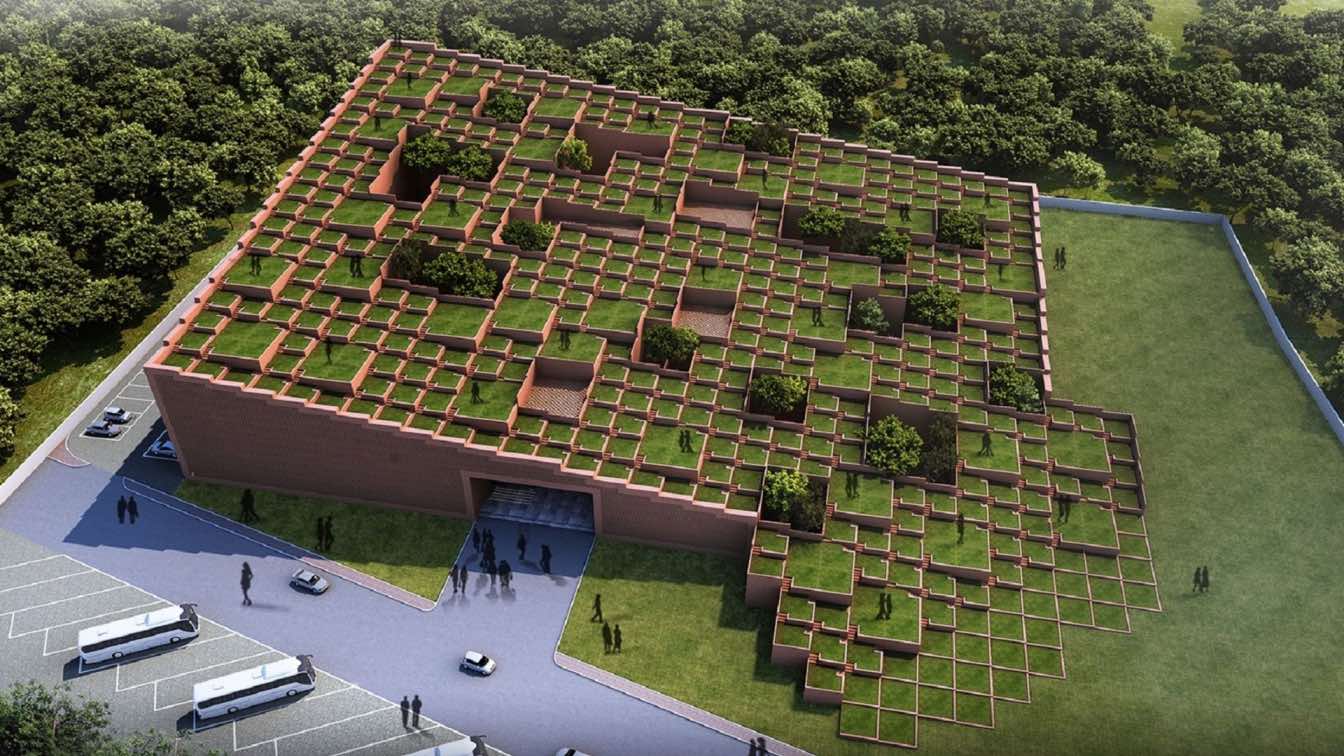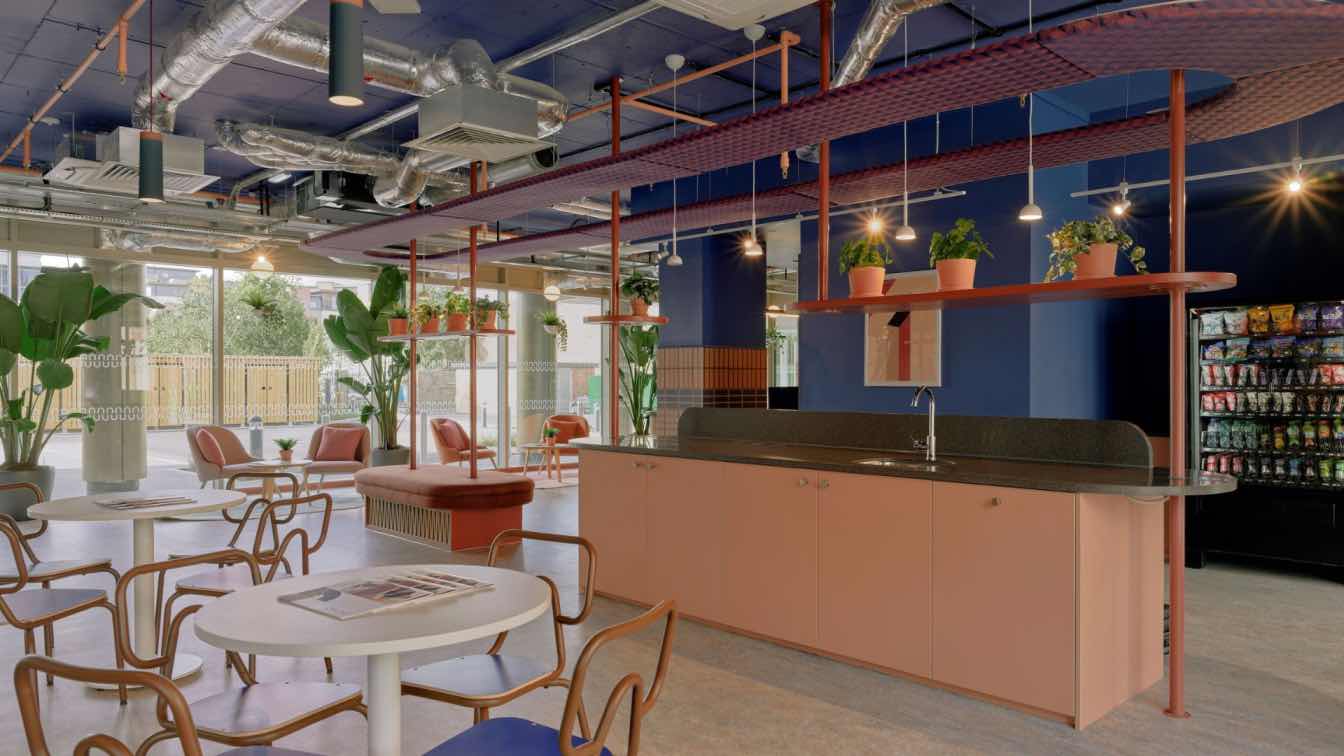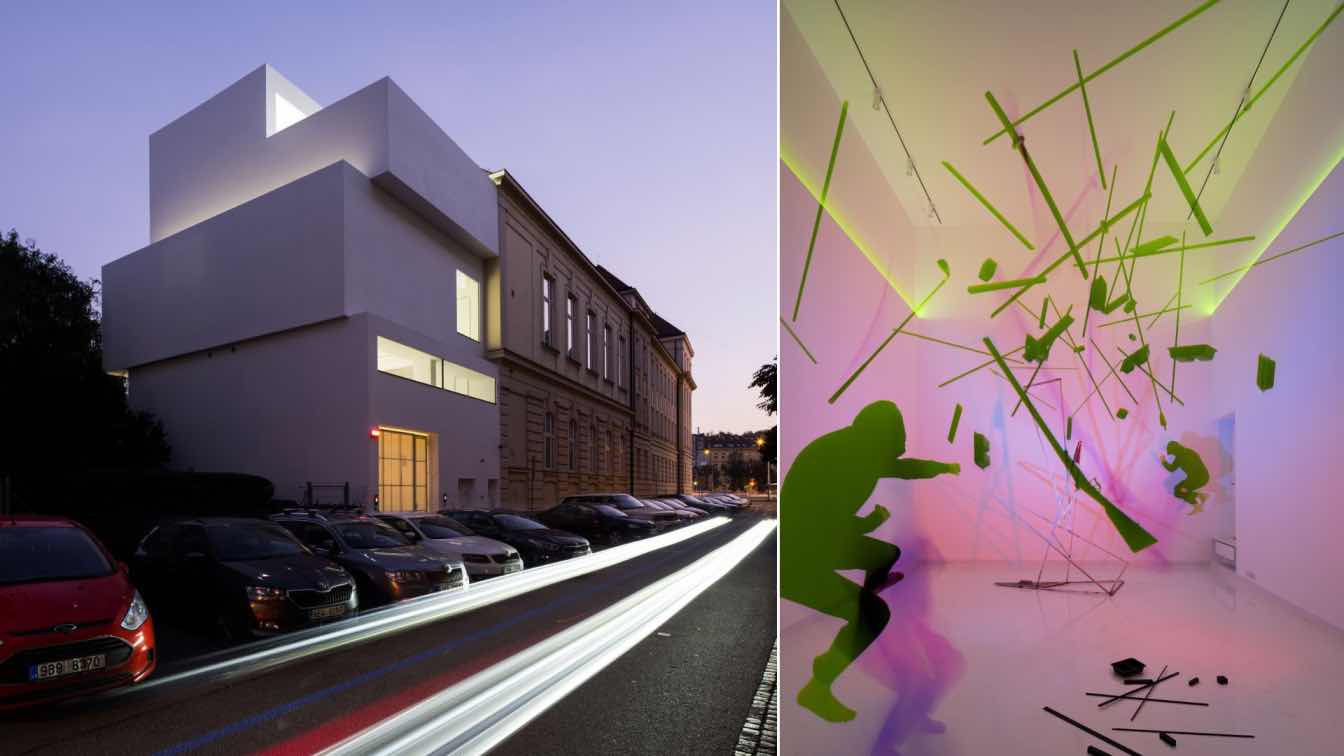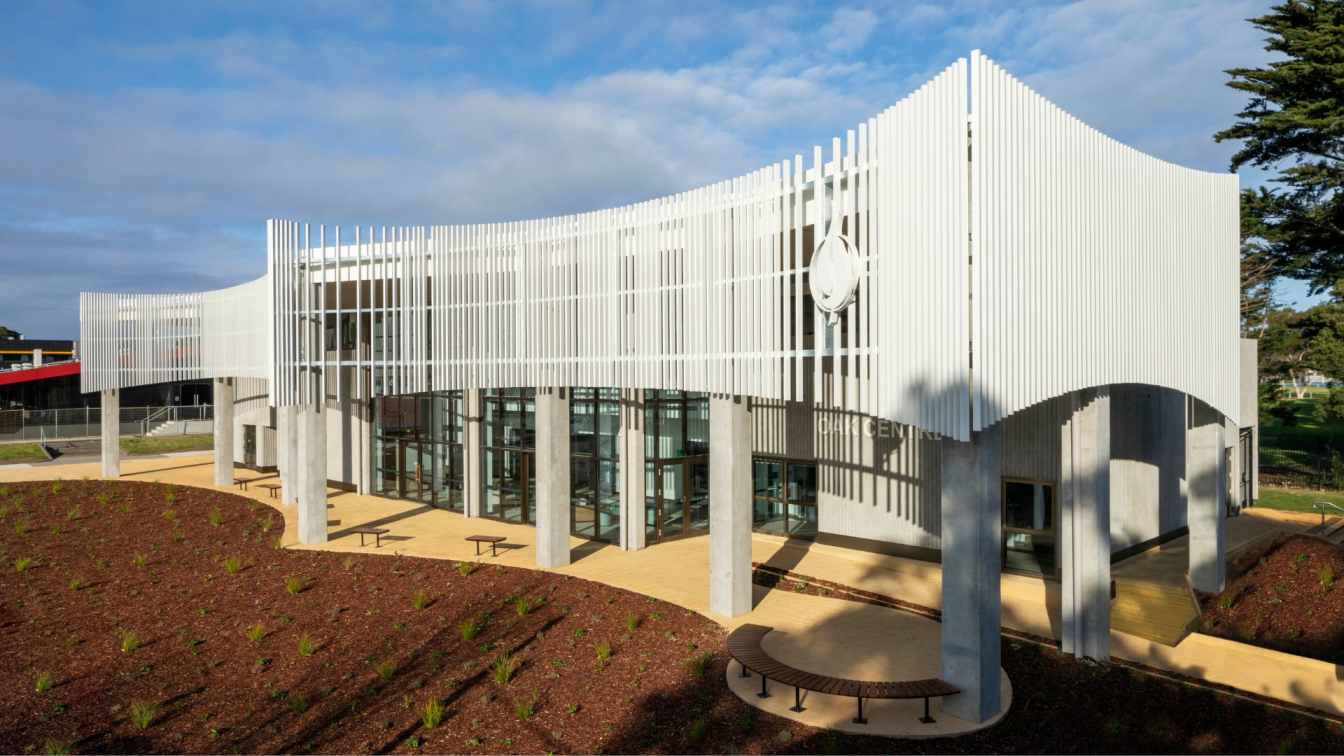Mohr Niklas Architects: Ágnes Heller considered life and freedom to be the greatest good. Based on the principles of the Hungarian philosopher, vibrant campus life and generous open spaces are also at the heart of the new university building named after her. The area around the Ágnes-Heller-Haus is now a valuable recreational space – a lively link between the Innrain and the popular Inn promenade. The extensive inner-city green space is made possible by the compact floor area of the building. A distinct urban planning decision that not only shapes the striking cubature but also the character of the surrounding area.
The 13,000 m² of space includes a 600-seat auditorium and a large lecture hall with 200 seats, the canteen, a library, office and seminar rooms, reading and learning zones. The striking entrance portal by Austrian artist Peter Sandbichler is a reference to the traditional arcades in the nearby old town of Innsbruck.
More city, less asphalt
Urban planning concept
The guiding urban planning principle is to compress the development on the Innrain and consistently maximise urban space reserves. The resulting green space offers a valuable inner-city recreational area and sustainability on a social, ecological, environmental and climatic level. The resulting partial densification creates a clear urban edge to the street space and represents the university in the form of a new high point in the superordinate urban system and takes account of Innsbruck's ongoing densification process.
The positioning of the building defines two differentiated open spaces. Christoph Probst Platz is redefined as the main square of the campus and is given a coherent urban setting by the new building. A generously proportioned main entrance forms the building's address to the square. From the green area, the landscape descends via a green staircase to the lecture halls in the basement. The publicly accessible campus meadow serves as an unmoderated urban green space.

Between small and large-scale volumes
Building structure
The structure of the building mediates between the small-scale perimeter block buildings and the large-scale volumes of the nearby hospital area, taking up the grain of the neighbourhood. The structure of the building develops directly from its program. An atrium forms the heart of the university building. It provides orientation and creates space for encounters and communication. As a democratic mediator, it opens up the variety of functions of the building via cantilevered staircases. The spaciousness of the atrium allows for long views and provides natural lighting for temporary workstations inside. Offices and permanent workstations are oriented towards the outside, offering natural light and ventilation as well as views over the city.
The guiding urban planning principle is to compress the development on the Innrain and consistently maximise urban space reserves. The resulting green space offers a valuable inner-city recreational area and sustainability on a social, ecological, environmental and climatic level. The resulting partial densification creates a clear urban edge to the street space and represents the university in the form of a new high point in the superordinate urban system and takes account of Innsbruck's ongoing densification process. The structure of the building mediates between the small-scale perimeter block buildings of Rechengasse and the large-scale volumes of the hospital area, taking up the grain of the existing university neighbourhood.
The aim is to build a robust building. A building that can withstand the changing processes of university operations and fulfil its role as a much-used public building. This begins with the structural design as a reinforced concrete building with a core and load- bearing outer walls, which allows for flexible floor plans in the long term - and ends with durable surface materials (artificial stone) in areas of the building that are subject to stress. The inner and outer façades form the load-bearing structure with which the large areas in the basement can be spanned economically.















































